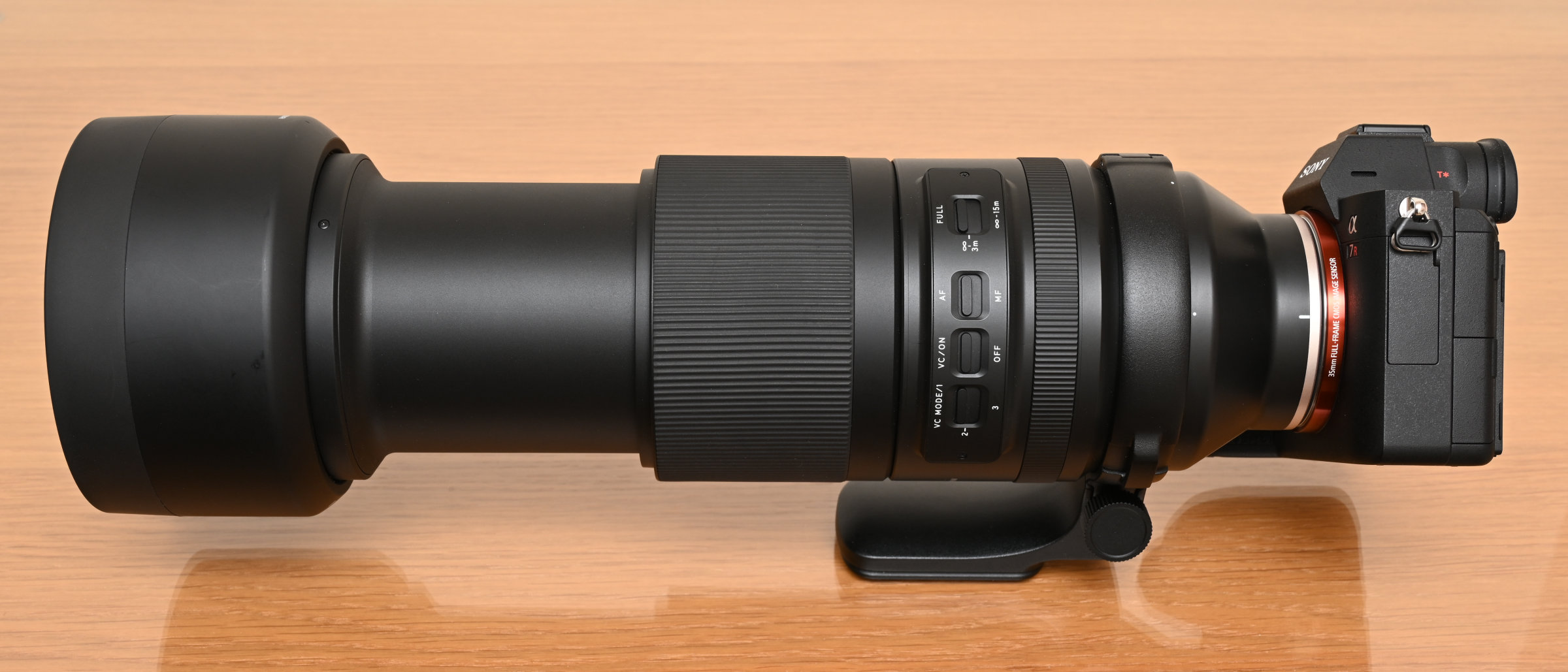Digital Camera World Verdict
Proving that compromise can be a good thing, this Tamron super-telephoto zoom delivers powerful reach with a fairly typical variable aperture rating, enabling a manageable size and weight for handheld shooting. It’s designed for Sony and Nikon full-frame mirrorless E-mount cameras but is equally appealing for APS-C format bodies (a Fujifilm X-mount option is now available), on which it gives a supersized ‘effective’ zoom range of 225-750mm. Strong overall performance and a range of smart features make it a good buy at the price.
Pros
- +
High-speed autofocus
- +
3-mode optical stabilization
- +
Arca-Swiss compatible foot
Cons
- -
Typically modest aperture
- -
Hefty for APS-C cameras
Why you can trust Digital Camera World
The Tamron 150-500mm F/5-6.7 Di III VC VXD is the company’s first super-telephoto zoom for full-frame Sony E-mount mirrorless cameras and, was more recently released in Fujifilm X and Nikon Z mounts. It’s up against stiff opposition from the excellent own-brand Sony FE 200-600mm f/5.6-6.3 G OSS, which gives even greater telephoto reach. However, the Sony lens is physically nearly 50 per cent longer, somewhat heavier and more expensive to buy.
The 150-500mm is very similar in many respects to some of the best 150-600mm lenses, like Tamron’s own SP 150-600mm F/5-6.3 Di VC USD G2 for Canon and Nikon DSLRs, which is also compatible with those brands of mirrorless cameras via their respective mount adapters. Again though, the 150-500mm is more compact and lightweight, and feels better balanced on slimline mirrorless bodies.
Specifications
Mount: Sony E (FE), Nikon Z, Fujifilm X
Lens construction: 25 elements in 16 groups
Angle of view: 5-16.5 degrees
Diaphragm blades: 7
Minimum aperture: f/22-32
Minimum focusing distance: 0.6-1.8m
Maximum magnification ratio: 0.32-0.27x
Filter size: 82mm
Dimensions: 93x210mm
Weight: 1,725g + 155g
Key features
At a glance, the look and feel of the Tamron 150-500mm are very similar to those of its DSLR-format 150-600mm G2 sibling, albeit in a smaller, more lightweight build. The range of switches is pretty much identical for triple-mode VC (Vibration Compensation), auto/manual focusing and an autofocus range limiter. Similarly, the lens features a typical zoom lock switch, but you can also lock the zoom ring at any desired position, simply by snapping the control ring forwards.
Unlike in many Tamron lenses, the ‘VC’ optical stabilizer has switchable operating modes and, as we’ve mentioned, there are three in this case. Modes 1 and 2 are for static and panning shots respectively. Mode 3 is a ‘framing priority’ option that only applies stabilization during actual exposures. This makes it easier to track erratically moving objects in the camera’s viewfinder or on the rear screen, similar to Mode 3 on some Canon telephoto lenses and Nikon’s ‘Sport VR’ mode.
The lens is completely different to Tamron’s 150-600mm in terms of autofocus. Whereas the DSLR-based lens uses a conventional ring-type ultrasonic system, the 150-500mm has a linear stepping motor which is super-fast, practically silent and gives the additional benefit of smooth autofocus transitions during movie capture.
There are no less than 25 optical elements, arranged in 16 groups. These include two hybrid aspherical elements, five LD (Low Dispersion) elements and one XLD (eXtra Low Dispersion) element. BBAR-G2 (Broad-Band Anti-Reflection Generation 2) coating is featured to minimize ghosting and flare.
Build and handling
As well as the slightly less generous maximum focal length, compared with the Tamron 150-600mm, downsizing is also enabled by a slightly narrower f/5-6.7 aperture rating at the long end. Even so, there’s only 1/6th of an f/stop in it. The focus ring is electronically rather than mechanically coupled, and offers good precision for ultra-fine manual adjustments.
Build quality is very good, with a tough, high-quality feel. The construction includes weather-seals and a fluorine coating on the front element, and all of the switches have a similarly high-end feel. We’ve criticized the switches in some Tamron lenses in the past for having overly large protrusions. It makes them easy to use when wearing gloves but it’s also easy to change their status accidentally. That’s not a problem in this case, the design having a good overall balance.
Part of the attraction of the reasonably lightweight design and effective optical image stabilizer is that the Tamron is well-suited to handheld shooting. It weighs 1,725g with the tripod mounting ring detached, taking 155g off the overall weight. The mounting ring itself is of very good quality. A design bonus we’ve seen increasingly of late is that the foot slots directly into the Arca-Swiss platform of a compatible tripod or monopod.
Performance
Living up to its billing, autofocus is extremely rapid and compatible with Sony’s Fast Hybrid AF where featured in-camera. Given that the lens’s zoom range fits so well with action, sports and wildlife photography, the fast and accurate tracking performance is a major benefit.
Sharpness is mostly excellent for such a powerful super-telephoto zoom but, as is often the case, it drops off a bit at the long end of the zoom range. Color fringing is essentially a non-issue, although pincushion distortion can be a little noticeable when uncorrected in-camera, throughout the entire zoom range.
We found optical stabilization to be worth around 4-stops in early Sony Alpha mirrorless cameras that lack in-body stabilization, and a little more with stabilized cameras. When using a tripod or monopod, the lens is very resistant to zoom creep, even when shooting vertically upwards or downwards but, as mentioned, you can lock the zoom ring at any position throughout the entire zoom range, simply by snapping it forward.
Sample images




Lab results
We run a range of lab tests under controlled conditions, using the Imatest Master testing suite. Photos of test charts are taken across the range of apertures and zooms (where available), then analyzed for sharpness, distortion and chromatic aberrations.
We use Imatest SFR (spatial frequency response) charts and analysis software to plot lens resolution at the center of the image frame, corners and mid-point distances, across the range of aperture settings and, with zoom lenses, at four different focal lengths. The tests also measure distortion and color fringing (chromatic aberration).
Sharpness:
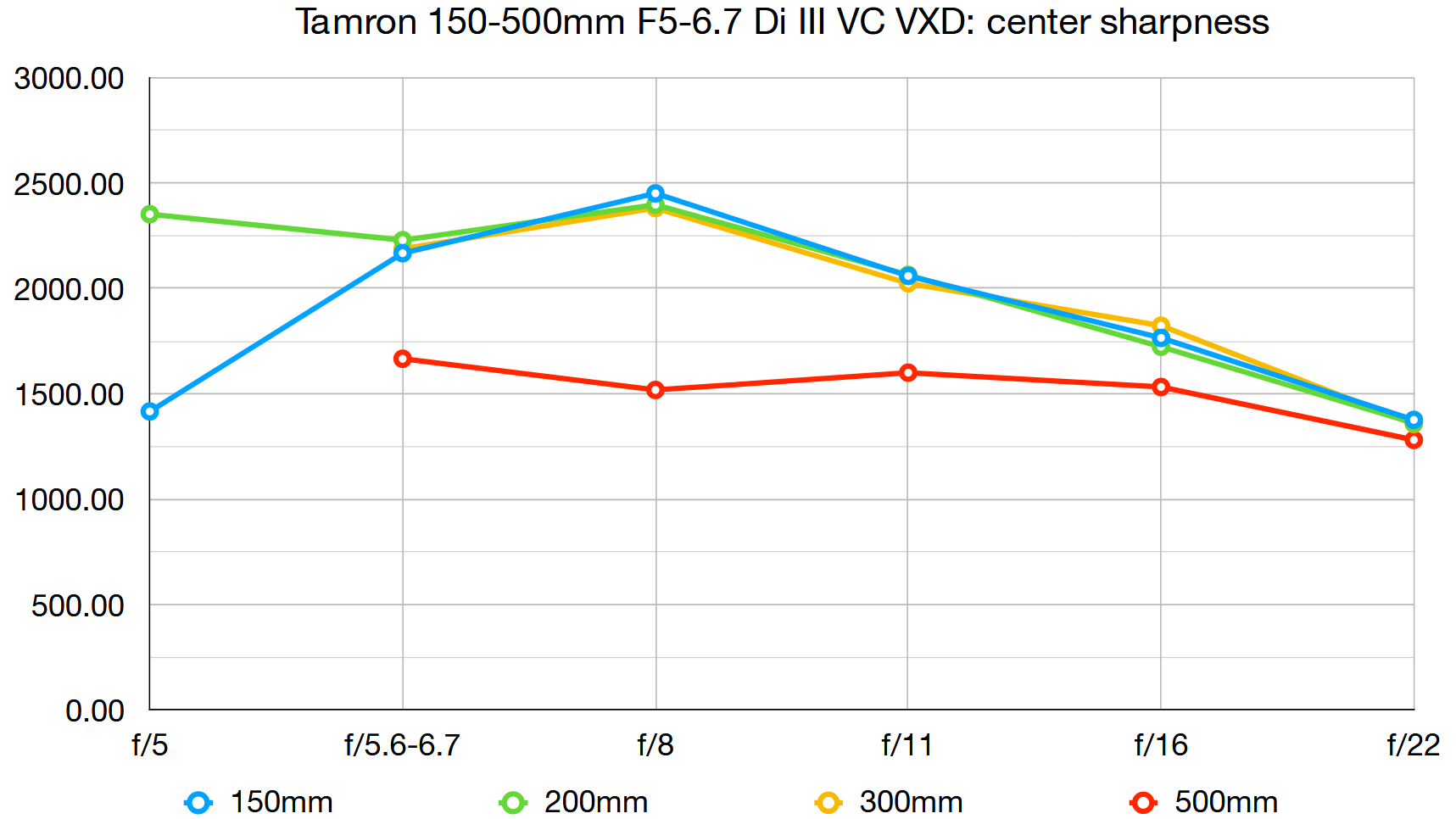
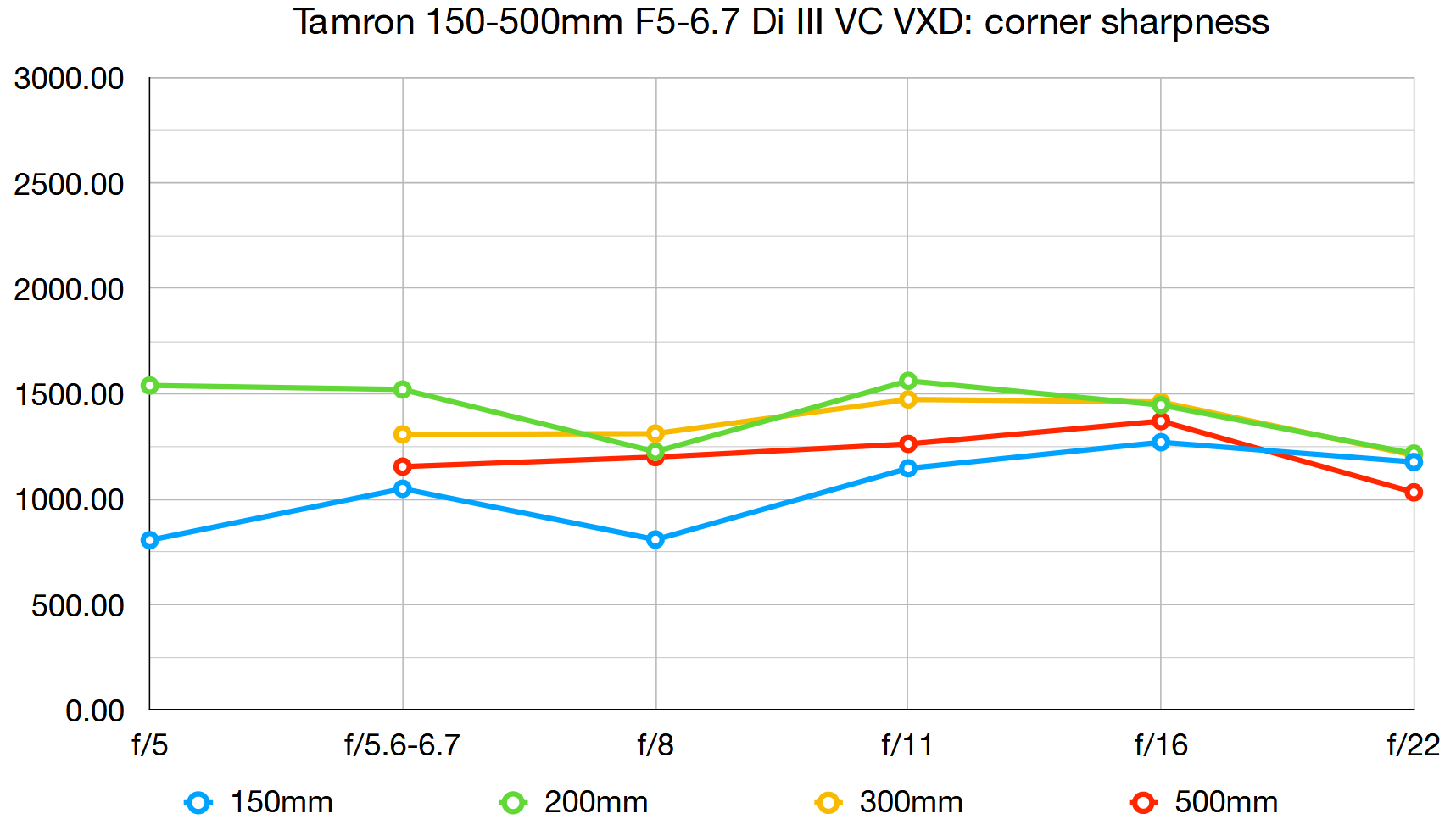
For optimum sharpness at the short end of the zoom range, it pays to stop down a touch from f/5 to f/5.6. Extreme edge- and corner-sharpness could also be a little better at the 150mm focal length. In the medium sector of the zoom range, sharpness is excellent even when shooting wide-open. As is often the case, sharpness drops off a bit at the maximum focal length but it remains very good indeed.
Fringing:
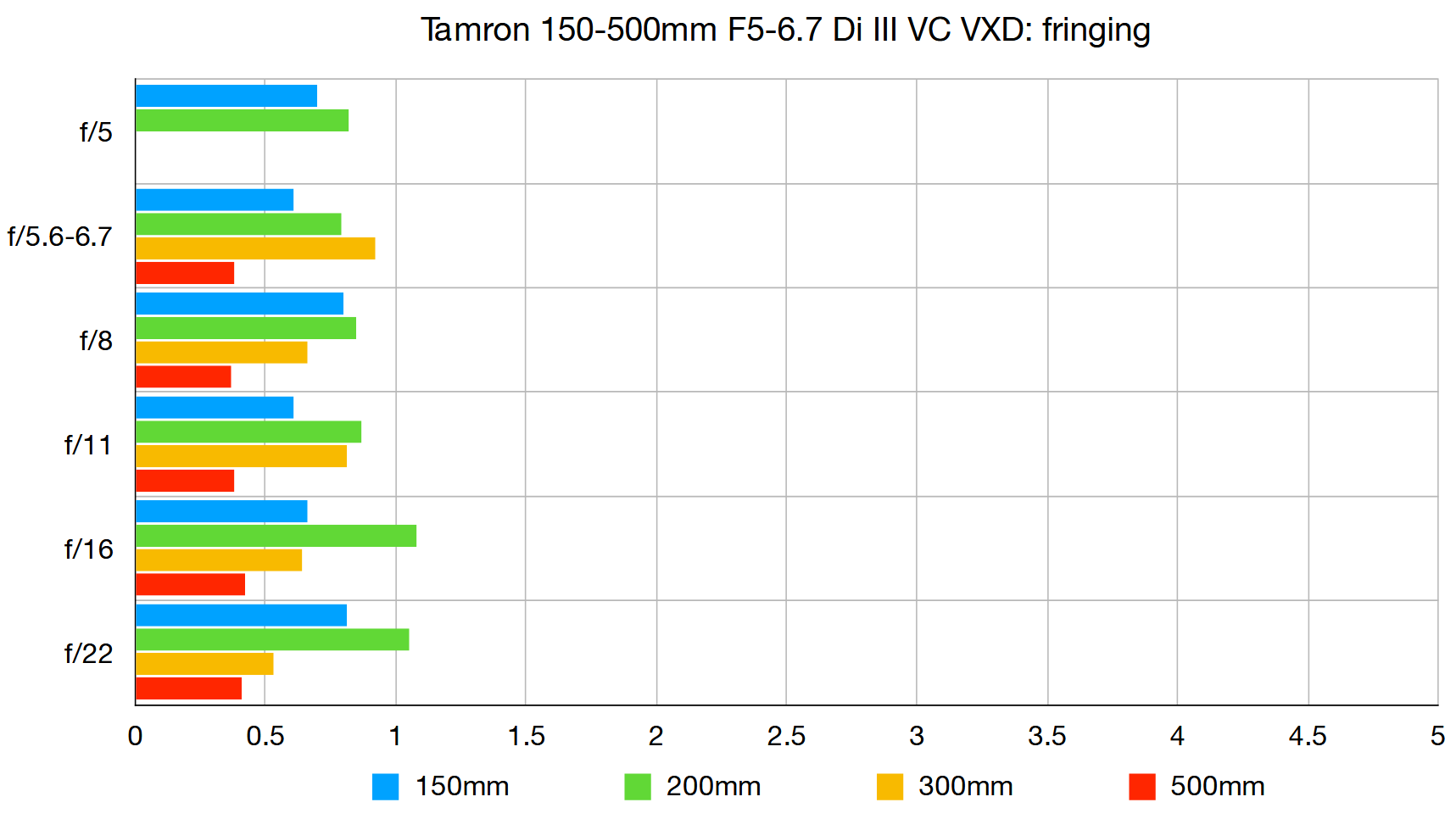
Color fringing is negligible at all zoom and aperture settings, even at the extreme edges and corners of the frame. In-camera correction is available but unneeded.
Distortion:
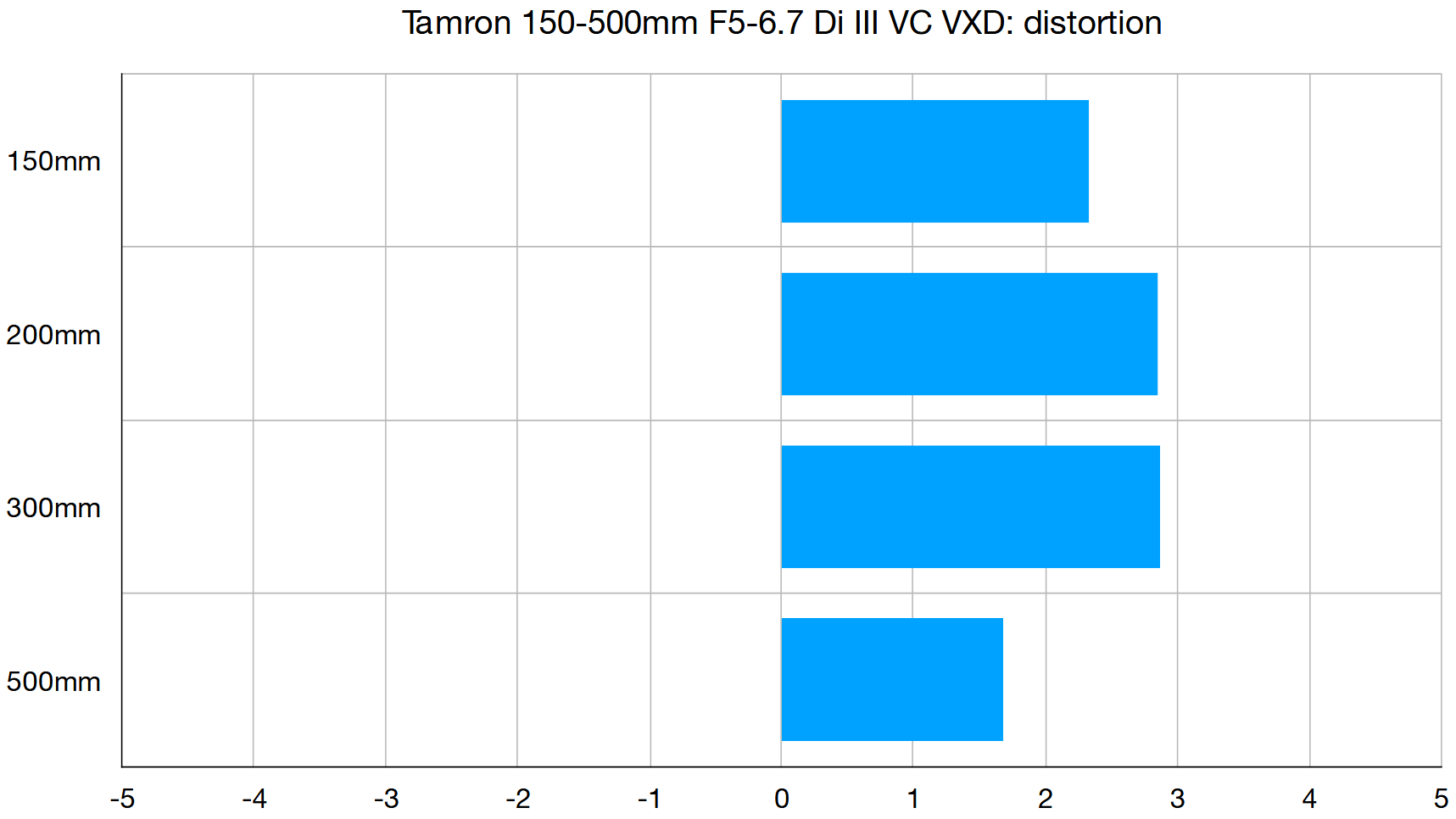
As with color fringing, in-camera correction is available for distortion. This time, however, it can pay to enable the correction as the Tamron delivers noticeable pincushion distortion in the 100-300mm sector of the zoom range, a little less so at the long end.
Verdict
The zoom range of this lens makes it highly attractive for action, sports and wildlife photography, backed up by super-fast autofocus and highly effective optical stabilization. It’s sufficiently compact and lightweight for prolonged periods of handheld shooting, and the removable Arca-Swiss compatible tripod mount collar is a further handling bonus. All in all, it’s a high-performance lens with a strong set of features and a very good buy at the price.
Read more:
• The best Sony lenses
• Best 70-200mm lenses
• Best telephoto lenses
• Best budget telephotos
Matthew Richards is a photographer and journalist who has spent years using and reviewing all manner of photo gear. He is Digital Camera World's principal lens reviewer – and has tested more primes and zooms than most people have had hot dinners!
His expertise with equipment doesn’t end there, though. He is also an encyclopedia when it comes to all manner of cameras, camera holsters and bags, flashguns, tripods and heads, printers, papers and inks, and just about anything imaging-related.
In an earlier life he was a broadcast engineer at the BBC, as well as a former editor of PC Guide.
